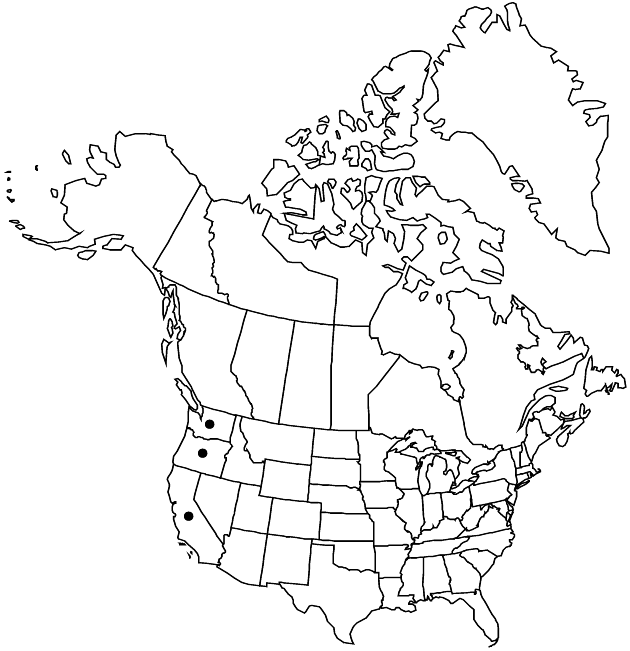Erechtites minimus
in A. P. de Candolle and A. L. P. P. de Candolle, Prodr. 6: 437. 1838.
Annuals or perennials, (50–) 100–200 cm (sparsely and unevenly tomentose, glabrescent). Taproots with branching lateral roots. Stems 1, erect. Leaves evenly distributed (proximal often withering before flowering); indistinctly petiolate (bases often weakly clasping); blades lanceolate to narrowly lanceolate, (3–) 7–20 × 1–4 cm, margins sharply and evenly toothed (not lobed or pinnatifid). Heads (40–) 80–200 in open, corymbiform arrays (or arrays of clusters). Involucres cylindric or turbinate, 4–7 mm. Phyllaries usually 8. Receptacles 3–5 mm diam. Cypselae 1.5–2 mm, usually puberulent in lines along relatively narrow ribs, sometimes glabrous. 2n = 60.
Phenology: Flowering summer–early fall.
Habitat: Disturbed, coastal sites
Elevation: 0–200 m
Distribution

Introduced; Calif., Oreg., Wash., Pacific Islands (New Zealand), Australia
Discussion
The type of Erechtites prenanthoides (A. Richard) de Candolle (a name sometimes misapplied to plants of E. minimus) is conspecific with the type of E. quaridentata (Labillardière) de Candolle.
Selected References
None.